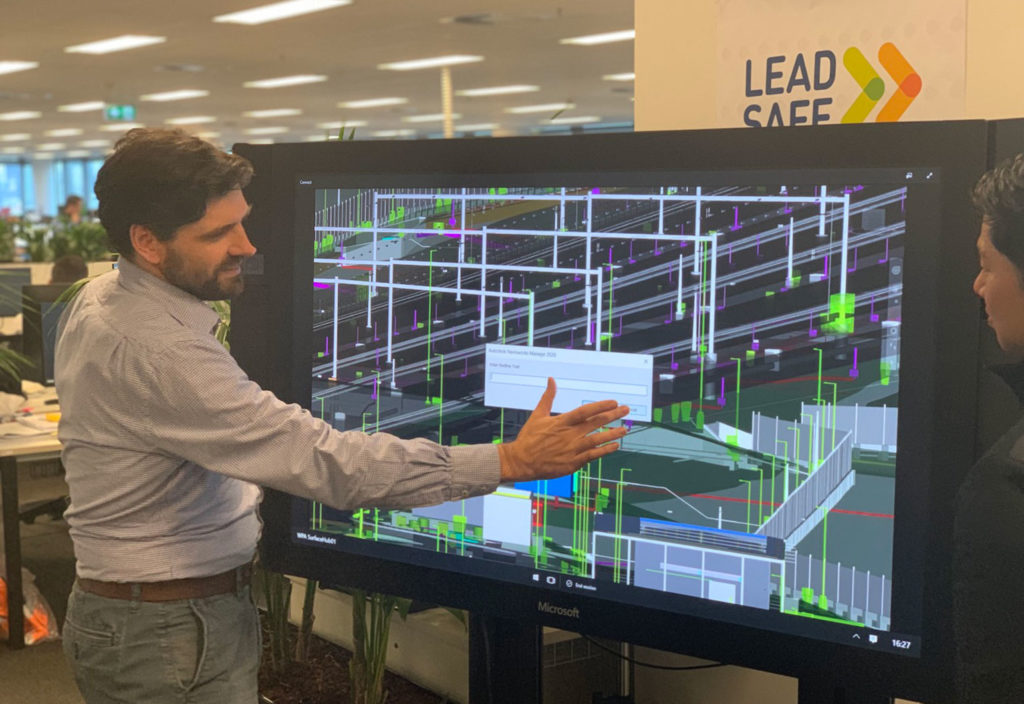Technology has been accelerating at lightning pace in recent years, and entire industries have been turned on their heads. Construction is no different, says Phil Hendy, Innovations and Continuous Improvement Manager at McConnell Dowell.
Companies such as Airbnb and Uber have prompted incumbents in hospitality and transportation to reassess their business models. Streaming services such as Netflix have placed video stores in the realm of nostalgia.
While the construction sector has been relatively slow to adopt advanced digital technologies, some industry leaders have been implementing smart tools to enhance every element of their business – from planning and design through to delivery. The results include increased productivity, lower costs and better safety outcomes.
Engineering and construction firm McConnell Dowell is one such leader. Along with its Western Program Alliance (WPA) partners the Level Crossing Removal Project (LXRP), Arup and Mott MacDonald, Metro Trains Melbourne (MTM) and V/Line, they are busy removing level crossings around Melbourne, including those completed at Kororoit Creek Road in Williamstown North and Abbotts Road in Dandenong South. The alliance is currently removing the level crossing at Aviation Road in Laverton and constructing a new stabling facility in Wyndham Vale.
Phil Hendy, Innovations and Continuous Improvement Manager at McConnell Dowell, said investment in building digital engineering capabilities has proven key to implementing a new two-stage design process by allowing better collaboration among the various stakeholders.
“We don’t just invest in technology for the sake of it,” Hendy said.
“There is a clear purpose, and that is to reduce waste and drive continuous improvement across every element of a project.”
Enabling collaboration
Last year WPA instigated and led a week-long design ‘Kaizen’ event with LXRP, MTM and the other alliance partners. This workshop pulled together a broad selection of representatives to explore the overall design process and create a process based on collaboration and two assurance review stages, rather than the previous three review stages. Building on the lean principles used, digital engineering has allowed the team to remove significant amounts of waste from the process.
“Traditionally, design submissions were sent with a spreadsheet for reviewers to fill in comments. These then had to be collated and transmitted back,” Hendy said.
“Rather than formally submitting design packages for review in isolation, we host weekly collaborative design reviews and get stakeholder input straight into our 3D digital engineering models, when we need it. As a result, the number of comments that create rework has halved.”
Investment in technology is delivering tangible results at McConnell Dowell. Schedules are now developed and modelled collaboratively in 4D to better plan work and create precise construction project scheduling for the teams.
Improving productivity and safety
Technology is also playing a significant role in improving productivity and enhancing safety for workers. McConnell Dowell is currently working with LXRP and technology company Orange on the Connected Site Project (CSP). The successes of this lproject, founded on collaboration between government, construction and technology, will be presented at the World Engineers Convention in Melbourne in November this year.
“With the Connected Site Project, we’re trialling various Internet of Things (IoT) devices to provide live data for our site teams. This enables our team, including our partners, to have far greater visibility of what is going on onsite. With this they can coordinate site activities in a more reliable manner to reduce wasted time and rework,” Hendy said.
“Data can also be used for benchmarking to drive better planning, estimates and continuous improvement across the industry. Other uses include using geo-fencing technology to provide alerts for breaches of no-go zones onsite.
“If we’re working alongside a train line, for example, and someone enters a no-go zone, we’ll get an alert to let us know that that’s occurred, so we can address the issue.”
Moving with the times
Technology is driving improvements in productivity, safety and cost efficiency across the industry. Hendy said that the construction industry has been slow to embrace the insights that data can provide, and a key challenge is keeping up with the pace of change.
“Our strategy is to encourage everyone at McConnell Dowell to be open to change and get better at changing,” he said.
“While the industry is behind, better implementation of technologies in construction and broader understanding of the value of data means that change is now significantly accelerating.
“My role is to support a culture where everyone is innovating. I encourage the whole team to understand their process, problems and opportunities, and develop new ideas to improve our performance.
“The industry needs to have a commitment and willingness to invest in new ways of doing things. I think that is something our industry does struggle with, but you’ve got to invest to get better.”
